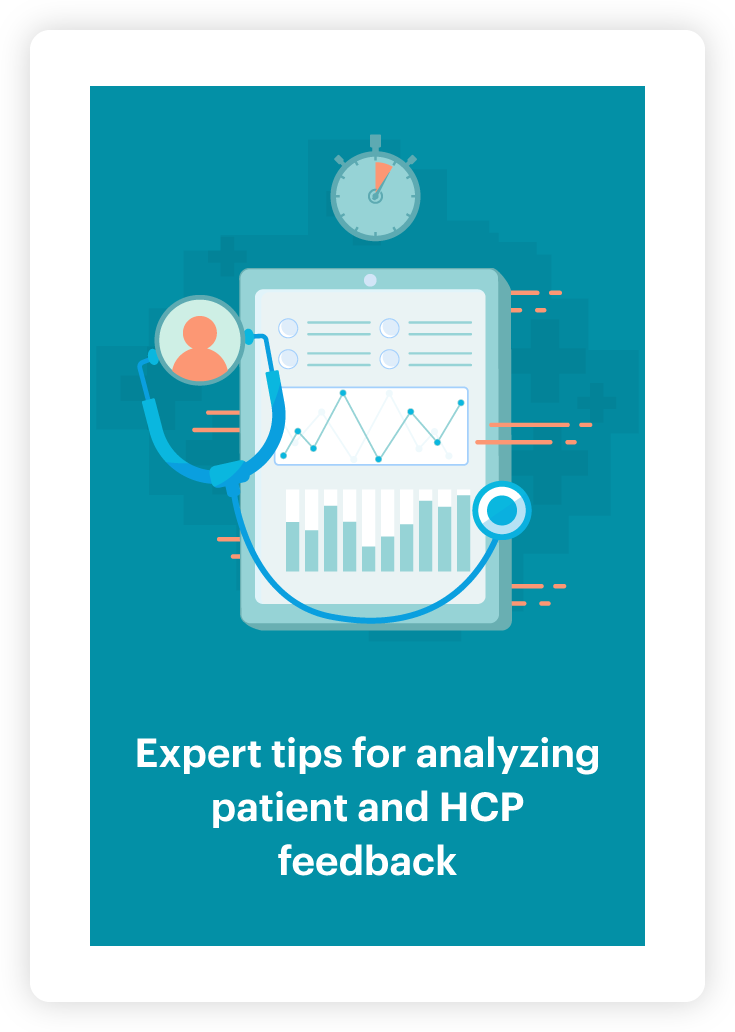Identifying what pleases and irks patients using high blood pressure drug reviews

High blood pressure is one of the most commonly diagnosed conditions in the developed world. In America, the CDC estimates that 47% of all adults have high blood pressure (aka hypertension), meaning it’s vital to know what this large health population requires from any new treatments.
Finding the data at scale to analyze patients’ views on medications can be tricky. However, text analytics software has made it far easier to make sense of large amounts of text data in rapid time. One such source of large-scale medical text data is patient drug reviews.
To demonstrate the understanding you can get from drug reviews, we looked at one of the most commonly prescribed high blood pressure medications: lisinopril. This generic medication was the 4th-most prescribed drug in the US in 2020 – dispensed 88.6m times. This wide health population creates a vast treasure trove of patient reviews available for analysis – too large for efficient manual analysis.
Specialist health text analytics software efficiently uncovers the insights contained within these reviews. To discover fascinating findings into what patients are saying about high blood pressure treatments, we gathered lisinopril reviews from a multitude of drugs review sites. We then uploaded this text data into our specialist medical text analysis tool – Relative Insight Medical.
Relative Insight Medical features all the power of Relative Insight’s comparative text analytics technology, plus 33 healthcare-specific topics which improve the tagging of medical language, helping medical, healthcare, pharmaceutical and biotech brands and agencies analyze and visualize text data like never before.
Once the lisinopril reviews were in the platform, we split the data by rating to compare high scoring and low scoring drug reviews. This offered a fascinating insight into what made patients like or dislike taking lisinopril.
Duration and dosage prominent in positive reviews
Patients who rated lisinopril 4* and 5* wanted to share their success stories step by step and in as much detail as possible.
Positive reviews were 2.9x more likely to use language related to ‘measurement’ and numbers. This incorporated both dosage and blood pressure readings, offering other hypertension sufferers an insight into what worked for them.
“I have been on 10 mg lisinopril for 8 months. My blood pressure stays consistently below 120/80. Usually the top number is 95 to 110. I have so far had zero side effects. No coughing or anything.“
Taking blood pressure medication is a journey, even for patients with positive experiences. This comes across in their reviews – they are 1.8x more likely to talk about ‘duration’ and periods of time, such as ‘days’, ‘months’ and ‘morning’. Feedback included how long they’d been taking the medication or, when they took medication and when they’d experienced changes.
The subject of change also overindexed in positive reviews – words relating to ‘change/modification’ appeared 6.5x more. Much of this focused on medical professionals ‘increasing’ dosage, which created positive outcomes.
“I have been taking this medication (lisinopril) for a couple years now. Started at 20mg a day for a year. Blood pressure didn’t go down to as safe a level as the doctor wanted so dosage was increased to 40mg a day. The only adverse side effect is the light headedness I experience when standing.“
Unsurprisingly, positive drug reviews were 9.8x more likely to surface the language of ‘contentment’. Patients were more likely to use words like ‘thankful’, ‘satisfied’ and ‘glad’ when talking about the treatment.
“I feel great, and I’m glad to have my blood pressure finally under control.“
Negative reviews highlight symptoms, side effects and practitioners
Interestingly, negative reviews were much more likely to use language tagged by Relative for Medical’s medical-specific topical analysis. This took the form of multiple types of symptoms – side effects from the high blood pressure medication.
Reviewers were 3.5x more likely to talk about general ‘symptoms’, such as ‘pain’ and ‘inflammation’. They also used the word ‘sweat’ – which non-specialist text analysis tools would traditionally categorize under topics like ‘heat’ or ‘fashion’. Our specialist software also identified that ‘respiratory symptoms’ appeared 2.8x more in bad reviews. This included ailments such as ‘coughs’, ‘phlegm’ and ‘pneumonia’. Those complaining about lisinopril also used the word ‘like’ 3.5x more. However, this was within the context of what they felt like, rather than expressing a preference for treatments.
While it’s unsurprising that negative drug reviews surface complaints about side effects and symptoms, using a healthcare-specific text analysis tool helps to quickly identify types of side effects present in medication – such as respiratory issues.
“I had temporary high blood pressure because of a hormone imbalance. My doc prescribed lisinopril. Worst experience. While it did lower my blood pressure, I was tired, lethargic and the cough was horrible.“
The other key difference in negative reviews was the use of pronouns – patients were 9.8x more likely to use the words ‘he’ and ‘she’. These are references to their doctors. Reviewers were also infinitely more likely to use to word ‘said’ and the phrase ‘my doctor said’. This highlights that negative reviews not only surface potential side effects, they also contain implicit (and often explicit) criticism of the response from healthcare professionals.
“Saw doctor for follow up visit. She actually laughed when hearing of my neck and shoulder pain: ‘I’ve never heard of this.’ She actually asked if I’m sure I didn’t do something to cause it.“
Extra data points around medication
Drug reviews offer another valuable source of information for brands and agencies in the health sector looking to understand conversations around medication. They enable organizations to track various information, from drug side effects and limitations to how patients talk about their conditions.
Through comparing lisinopril reviews using Relative Insight Medical, the tool has highlighted that respiratory side effects are among those which afflict patients the most. However, it’s also uncovered unexpected insights which can help with positioning and communication for both lisinopril and other medications. Health populations like to include significant detail when talking about treatments and frame them as a journey – something brands, agencies and healthcare practitioners could mirror to resonate with patients.
Whether it’s comparing positive and negative reviews of the same drugs or looking at the similarities and differences between a variety of treatments for the same condition, Relative Insight Medical‘s specialized medical lexicon helps organizations in the sector uncover insights with pinpoint precision. Request a free trial now to see how the software can help you analyze and visualize text data.

